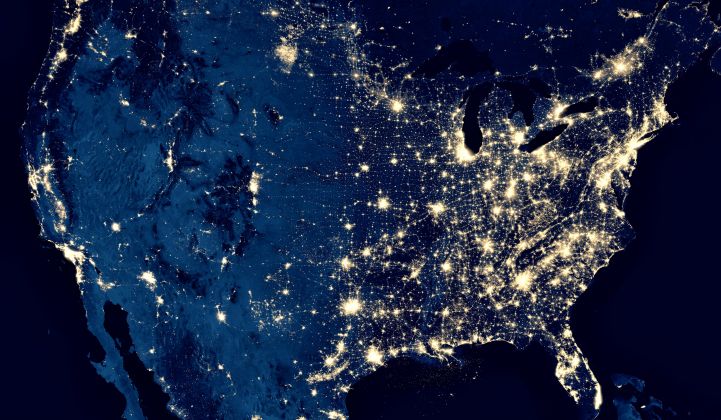With the coronavirus pandemic still raging, the U.S. government needs to find ways to boost federal revenue and help put people back to work. Leasing out more areas for offshore wind development would be a step in the right direction.
The U.S. could generate $1.7 billion for the Treasury over the next two years and pave the way for tens of thousands of new clean-energy jobs by leasing out offshore wind areas already under study by the Bureau of Ocean Energy Management (BOEM), according to a new Wood Mackenzie analysis.
Those new zones could hold 37 gigawatts of future offshore wind capacity, nearly tripling the 21 gigawatts that could be built in already-leased federal waters, WoodMac says. That would bring more competition into the market, lowering project costs and making supply-chain investments more likely to happen.
It would also open the door to the U.S. becoming one of the world’s first big markets for floating offshore wind turbines, giving the country a chance to catch up with Europe in developing a major new source of clean energy.
The American offshore wind market already looks set for big growth this decade, as developers including Ørsted, Shell and Dominion Energy prepare to build projects along the East Coast. Wood Mackenzie’s base scenario sees 25 gigawatts of capacity getting built by 2029, up from the mere 42 megawatts in place today.
But the relative scarcity of zones available for development — and the lack of certainty as to when new zones will be leased out — is becoming a larger challenge for the industry as it contemplates supply-chain investments and workforce requirements. It's an unusual situation for the U.S. renewables market, where most onshore projects are built on private land.
The scarcity of zones is most acute in the region south of Long Island, known as the New York Bight, which could host projects for both New York and New Jersey.
“There’s not a particularly large number of [already-leased] areas — there are 15 commercial leases, and a number of them are held by the same group of companies,” Max Cohen, principal analyst at Wood Mackenzie, said on a Tuesday call. “For offshore wind to be a robust, competitive industry, more lease areas are going to be needed."
The report was commissioned by four industry groups: the American Wind Energy Association, the National Ocean Industries Association, the New York Offshore Wind Alliance and the University of Delaware’s Special Initiative on Offshore Wind.
Offshore wind: Potential windfall for U.S. Treasury
The Interior Department’s BOEM, which oversees energy development on the federally owned seabed, has established a number of offshore wind lease “call areas” — a formal step toward potential lease sales. Such call areas are under study in the New York Bight, off the California coast, in the Gulf of Maine, and along North and South Carolina.
But BOEM is no longer expected to hold any lease sales in 2020, and its exact plans for 2021 remain unclear.
One thing is clear, however: Leasing more zones would mean more revenue for government coffers.
The value of U.S. offshore wind leases has skyrocketed since 2015, as it became apparent that the technology was a good fit for American waters and states embraced ambitious targets.
A 2015 lease auction held by BOEM drew just two bidders, with the winner claiming a prime zone south of Massachusetts for the equivalent of just $247 per square-kilometer. By comparison, the most recent BOEM auction, held in 2018, drew winning bids worth more than $250,000 per square-kilometer.
If BOEM were to lease out all the zones it’s currently studying off New York, California and the Carolinas in 2020-2021, it would net $1.2 billion in Treasury revenue and open up space for another 28 gigawatts of future capacity, Wood Mackenzie estimates. If it then held auctions for the Gulf of Maine and additional areas off California in 2022, it would generate another $500 million of revenue and unlock 9 gigawatts of additional potential capacity.
Not all zones potentially up for grabs are equally valuable. Projects built off the Carolinas, for example, would have lower capacity factors than those off of New England or New York; there are also fewer obvious offtakers for their power. Projects built off California or Maine would need to be built using floating turbines, necessitating more-expensive technology — and likely driving auction prices down.
While increasing state-level support for offshore wind has driven auction prices up in recent years, the number of participating bidders also plays an important role, Cohen said. Eleven development groups placed bids in the most recent auction, and more may participate in the next one.
“This is not a linear relationship; it only takes a small increase in the number of companies interested in bidding on these areas to have a truly incredible increase in the winning bids," Cohen said. “If just two of those 11 companies get into a bidding war for these areas, then you’re going to see a large increase in revenue to the U.S. Treasury.”




